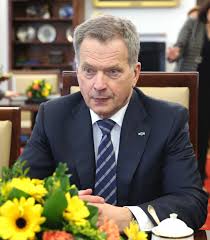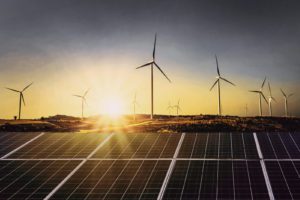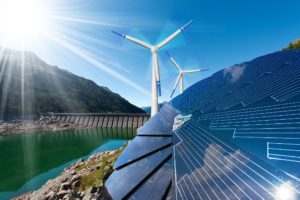
President of Finland Sauli Väinämö Niinistö has assured Ukraine of support in the area of energy sector reforms, in particular renewable ones.
“We are cooperating in the energy sector. We are interested in cooperation in the field of renewable energy sources and, I think, it will be for the benefit of both states. Therefore, we are ready to share our knowledge in this area,” he said at a joint press conference with President of Ukraine Volodymyr Zelensky in Kyiv.
He emphasized that Finland had also done a lot of work on forests.
“For the forests not only contribute to the economy, but also improve the life of society,” Niinistö added.

The Bioenergy Association of Ukraine (BAU), together with the associations uniting the leading producers of electricity from renewable energy sources, have addressed President of Ukraine Volodymyr Zelensky regarding the situation with the payment for purchased electricity from alternative sources at a feed-in tariff. According to the press service of the BAU, the decisions of the Kyiv District Administrative Court to suspend the decisions of the National Commission for Energy, Housing and Utilities Services Regulation (NCER), which set tariffs for electricity transmission for Ukrenergo, will lead to non-payments to producers of electricity from renewable sources.
The letter also emphasizes that the decision of the Kyiv District Administrative Court to satisfy the claim of Nikopol Ferroalloy Plant to secure the claim against the NCER will lead to a halt in building new renewable energy facilities, a failure to comply with the obligations to financial institutions. In addition, it will damage the investment attractiveness of Ukraine and freeze the development of the renewable energy industry.
“We are asking to support the strategic development of the renewable energy industry in Ukraine and prevent the deterioration of the investment climate due to the violation of the guarantees provided by the state,” the letter reads.

Ukraine in June 2019 increased electricity generation from renewable energy sources by 2.8 times (by 378.3 million kWh) compared to June 2018, to 585 million kWh.
According to data from the Ministry of Energy and Coal Industry, available to Interfax-Ukraine, production of electricity from renewable energy sources in January-June 2019 increased by 1.9 times compared to the same period last year, to 2.372 billion kWh.
The share of renewable energy in the structure of electricity production in June 2019 reached 5% against 1.8% in June 2018, while the share of renewable energy in the first half of this year was 3% against 1.5% in January-June 2018.
As reported, as of the end of the first half of the year, the installed capacity of renewable energy facilities reached 3,634 MW, in particular that of solar plants some 2,640 MW, wind plants 776.6 MW, biomass plants 51.3 MW, and biogas stations some 66.4 MW.

The European Bank for Reconstruction and Development (EBRD) could organize a syndicated loan of EUR 80 million for state-owned Ukreximbank (Kyiv) to support renewable energy and energy efficiency private investments in Ukraine.
According to a posting on the bank’s website, EBRD will provide EUR 40 million from own account.
The provision of the loan is pending the approval of the EBRD Board on June 19, 2019.
Ukreximbank, a wholly owned state bank, was established in 1992. It ranked third among 77 banks in Ukraine in terms of total assets worth UAH 232.064 billion as of January 1, 2019, according to the National Bank of Ukraine (NBU).

Ukraine in March 2019 increased generation of electricity by renewable energy facilities 1.9 times (by 195.8 million kWh) compared to March last year, to 409 million kWh. According to the Energy and Coal Industry Ministry, in January-March 2019, the production of electricity by renewable energy facilities increased 1.6 times (by 317.5 million kWh) compared to the same period last year, to 850.3 million kWh.
The share of renewable energy in the structure of electricity production in March 2019 amounted to 2.9%, which is 1.5 p.p. more than in March 2018. The share of renewables in the first quarter of this year was 1.9%, which is 0.7 p.p. more than January-March 2018.
As reported, the forecast electric power balance of Ukraine, updated at the beginning of April, envisages production of electricity by renewable energy facilities in the amount of 5.979 billion kWh, which is 2.3 times (2.633 billion kWh) more than in 2018.
Ukraine in January-March 2019 introduced 861.1 MW of renewable energy facilities, which is 5.4 times more than in the same period of 2018, and 16% more than in the entire of 2018.

Ukraine in the first quarter of 2019 commissioned 861.1 MW of renewable energy facilities, which is 5.4 times more than in the same period last year, and 16% more than in the whole 2018. These data were announced at a meeting of the National Commission for Energy, Housing and Utilities Services Regulation (NCER).
Thus, the total number of installed capacities of renewable energy facilities in Ukraine at the end of March 2019 was about 3 GW.
In particular, in the first quarter some 172 MW of wind power plants were commissioned. DTEK Group put into operation the largest solar station of 246 MW, which is also the largest alternative energy station in Ukraine, in Dnipropetrovsk region. The NCER also noted that this year the largest roof solar plant with a capacity of 12 MW has been built at a mink farm.
In the first quarter of this year, renewable energy facilities produced 1.9 billion kWh of electricity.